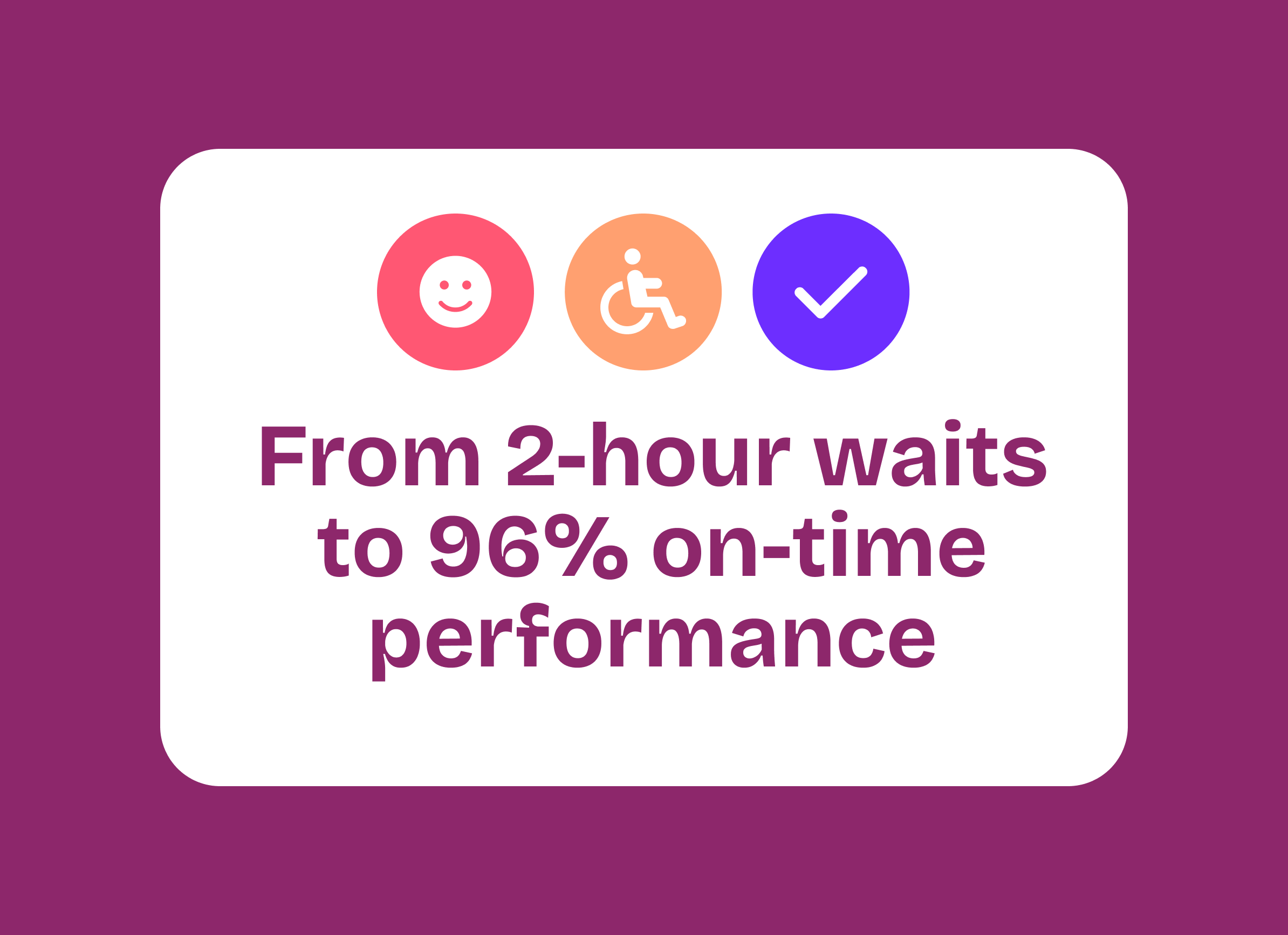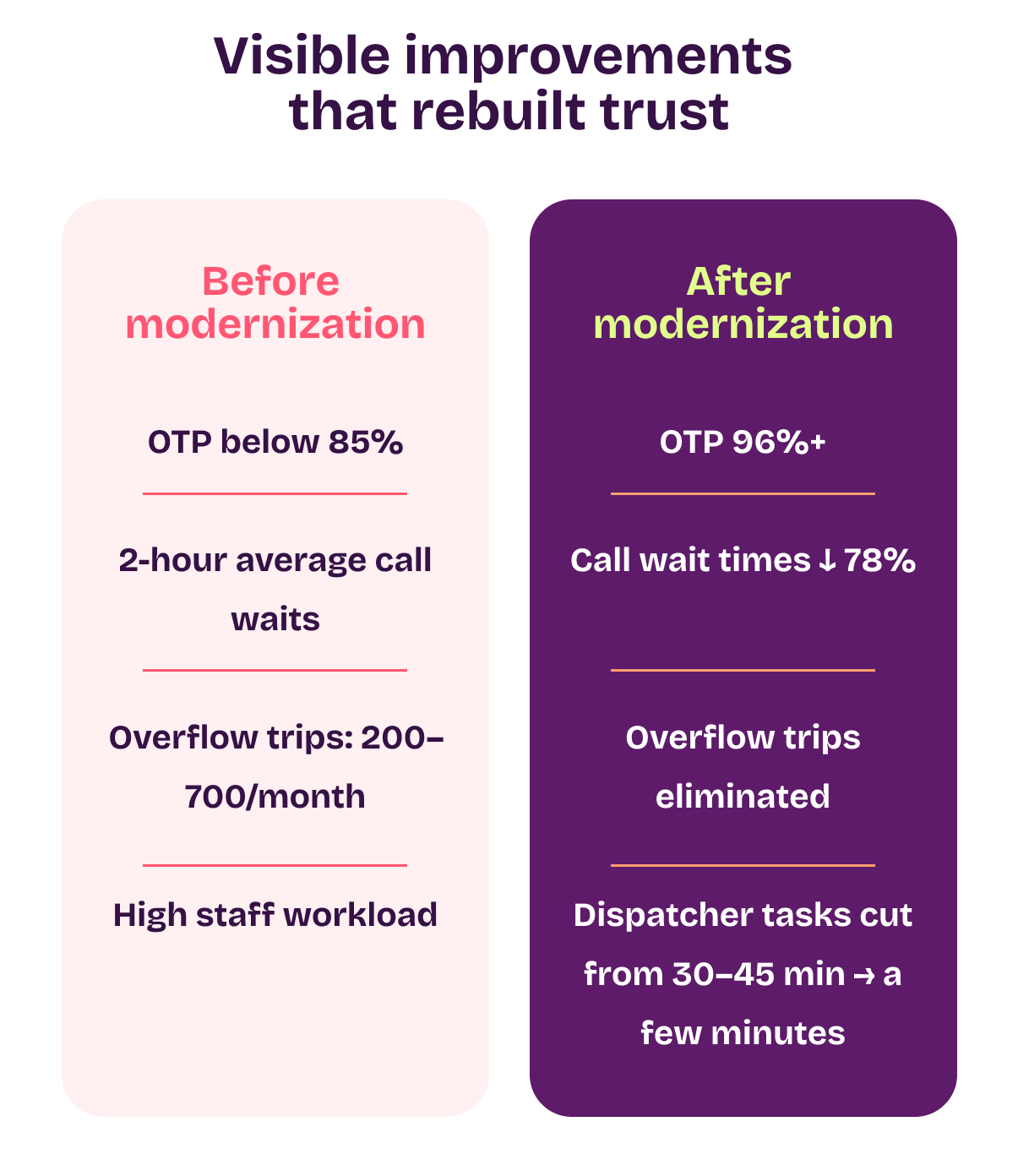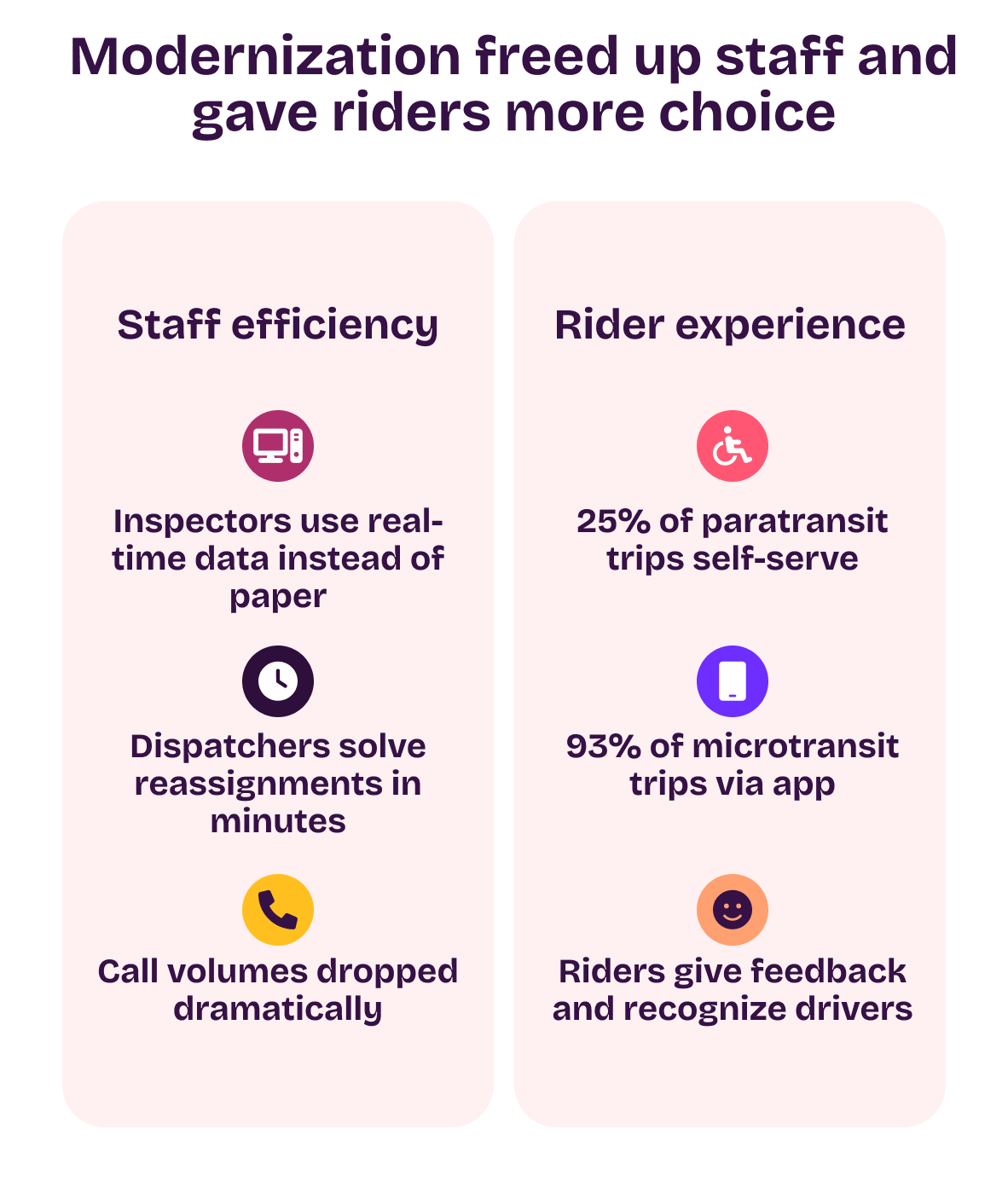Why transit modernization is about rebuilding trust, not just upgrading technology

Paratransit is one of the most complex and costly services a transit agency provides, and yet it supports the most essential trips: dialysis, work, school, groceries. Riders depend on it not just for mobility, but for dignity.
When outdated systems start to fail, agencies have little room for error. That was the reality facing Winnipeg Transit. On-time performance had slipped below industry standards, riders often waited hours on the phone, trip denials were mounting, and media scrutiny was growing.
Here’s how they turned it around — and what other agencies can learn.
When outdated transit systems break rider trust
When legacy systems can’t keep pace, the consequences go beyond operational headaches:
- Rider confidence erodes
- Staff morale suffers
- Councils and boards lose trust
As Theresa Platt, Manager of Client Services, put it:
“Our on-time performance was below industry standard, our trip denials were a significant issue, and our customers…wait times were ranging around the two-hour mark. It really impacted customer experience, team morale, and even drew media attention.”
Transit modernization often starts with acknowledging that outdated systems cost more than money — they cost credibility.
Rebuilding trust through transit modernization
Winnipeg introduced automated scheduling, rider self-service options, and real-time data. These weren’t abstract technology upgrades — they were ways to deliver on promises made to riders and council.
The results were immediate and, more importantly, predictable:
- 96% on-time performance (up from the low 80s)
- Overflow trips eliminated
- Call wait times reduced by 78%
As Cody Dzik, Operations Supervisor, recalled:
“We thought the phone system was down because call volumes dropped so dramatically.”
For other agencies, the lesson is clear: visible, predictable improvements are what rebuild trust with stakeholders.

Giving staff and riders more control
Modernization freed up capacity for everyone:
- Inspectors now use live data instead of chasing paper schedules.
- Dispatchers resolve issues in minutes, not half an hour.
- Riders can choose how they book trips: app, web, automated phone line, or call center.
Today, 25% of Winnipeg’s paratransit trips are self-serve, and in on-request microtransit, that figure rises to 93%.
More choice meant a smoother rider experience — while keeping traditional channels in place for those who rely on them.

Turning accessibility mandates into momentum
Like many agencies, Winnipeg faced the paradox of paratransit: mandated by law, critical for accessibility, yet chronically underfunded and often run on legacy systems.
Instead of seeing compliance as a burden, Winnipeg treated the Accessibility for Manitobans Act — and its eligibility requirements — as a catalyst.
“It’s very much a marriage between what we identified in our Transit Master Plan and the accessibility we’re committed to… and again, having that budget support and council support behind that.” — Theresa Platt
For agencies, this is a reminder: accessibility mandates can unlock funding, political support, and long-term momentum when paired with modernization.
Improving rider experience through feedback and collaboration
The biggest change has been cultural. Riders stopped being just complainants.
They began:
- Sharing feedback through in-app surveys
- Recognizing drivers for good service
- Stepping up as “super users” to support others
As Theresa put it:
“It really has resuscitated the entire service. It feels like a journey we’re on together—our teams, our customers, our stakeholders.”
When service quality improves, riders stop being only complainants and start becoming collaborators.
Transit modernization that restores trust — without disruption
Winnipeg’s journey highlights a lesson every agency knows: modernization is as much a change management challenge as it is a technology one.
By addressing rider apprehension, building staff buy-in, and aligning with accessibility mandates, Winnipeg turned a strained service into one that riders and stakeholders trust.
For agencies navigating similar pressures, the key isn’t speed — it’s safe, step-by-step modernization that delivers visible wins without disruption.
And in large systems, that means balancing more than service metrics: councils, unions, and political stakeholders all influence how modernization succeeds.
That’s how leaders build the confidence to move their systems — and their communities — forward.
Because for the riders who depend on paratransit, this isn’t just about service reliability. It’s a lifeline too important to fail.

Having applications in Spare not only significantly streamlines our application processing, but it also allows us to more efficiently and effectively serve GATRA riders. GATRA can process applications in real time so riders can start using the service right away.
.png)





